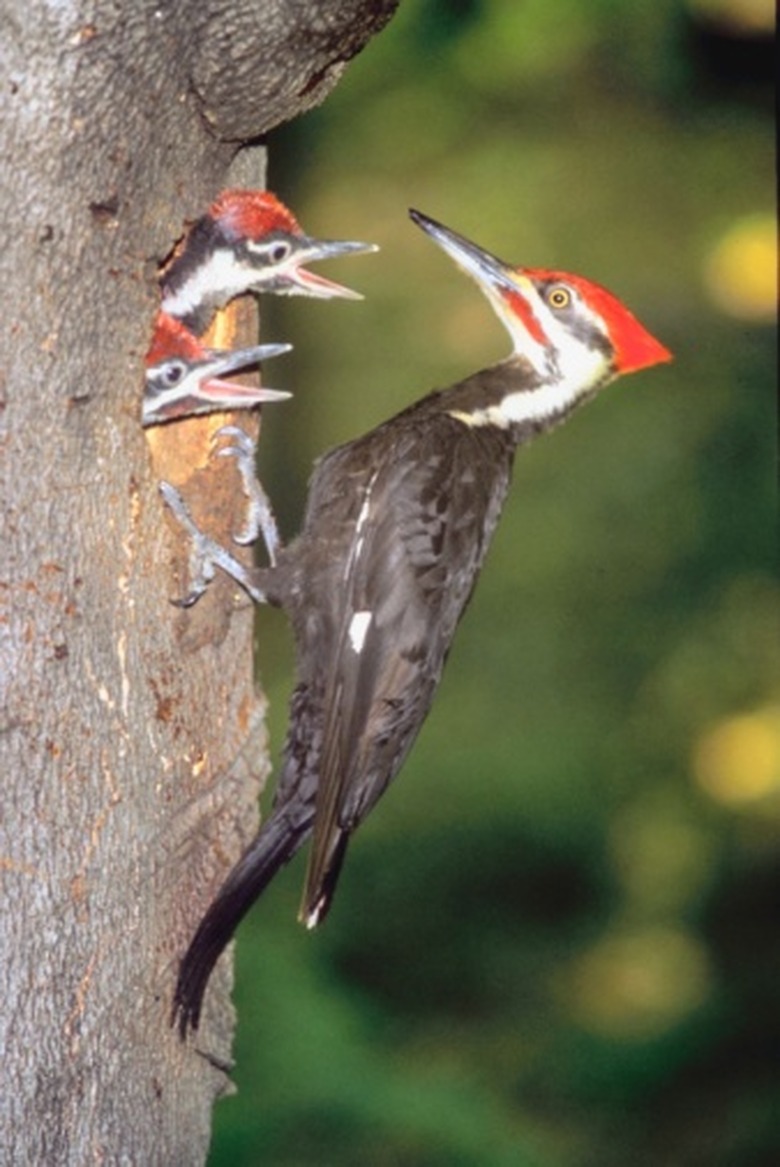What Are The Similarities And Differences Between Woodpeckers And Purple Martins?
Birds are interesting creatures. Just ask any of the 50 million bird watchers in the U.S. The U.S. Fish and Wildlife Service estimates there are 800 species of birds in North America. You can probably see about 100 of them just in your own yard. A couple of fairly common birds are woodpeckers and purple martins. (See Reference 1)
Woodpeckers
Woodpeckers
Known for tapping on tree trunks to find insects to eat, woodpeckers appear all over the world — except Australia. There are over 180 species of woodpeckers. They eat insects, acorns, fruit and nuts. Their beak, which is very strong and pointed, acts like a chisel and a crowbar in their hunt for food. Their tongue is very long compared to their size; four inches in some species with a substance like glue on the tip which also helps them catch insects. The woodpecker ranges from 6 to 21 inches in length.
Purple Martins
Purple Martins
These are the largest birds in the swallow family in North America, 7 1/2 inches long and 1.9 oz in weight. They are aerial insectivores. This means they only eat insects they catch in flight. They eat dragonflies, flies, midges, mayflies, moths, bees, wasps and butterflies, and others. Because they feed only on flying insects, they are susceptible to starvation during long periods of rainy weather. Purple Martins are monogamous. Both parents feed the babies.
Similarities
Similarities
Both species eat insects. Both species work together as a pair to build their nests. They both incubate their eggs for about two weeks. It also takes about 30 days for the young of both species to fledge. Both are picky about housing. Woodpeckers prefer specific trees, depending on the area. Purple Martins are the only bird that relies almost exclusively on human-provided housing, particularly in the eastern U.S. They also prefer white houses and their privacy, so Purple Martin houses have separate apartments, along with little patios.
Differences
Differences
Some woodpecker species are larger than Purple Martins; some are close to the same size. Woodpeckers have two clawed toes pointing in each direction, which help them hang onto the tree while they're tapping. They also use their tails for balancing during tapping sessions. Purple Martins have three toes pointing forward, and one pointing backwards. Woodpeckers lay four eggs per clutch, Purple Martins lay two to seven. In the western U.S., Purple Martins will use old woodpecker holes for nesting.
Cite This Article
MLA
Yenko, Jayne. "What Are The Similarities And Differences Between Woodpeckers And Purple Martins?" sciencing.com, https://www.sciencing.com/similarities-between-woodpeckers-purple-martins-8138035/. 22 November 2019.
APA
Yenko, Jayne. (2019, November 22). What Are The Similarities And Differences Between Woodpeckers And Purple Martins?. sciencing.com. Retrieved from https://www.sciencing.com/similarities-between-woodpeckers-purple-martins-8138035/
Chicago
Yenko, Jayne. What Are The Similarities And Differences Between Woodpeckers And Purple Martins? last modified March 24, 2022. https://www.sciencing.com/similarities-between-woodpeckers-purple-martins-8138035/
